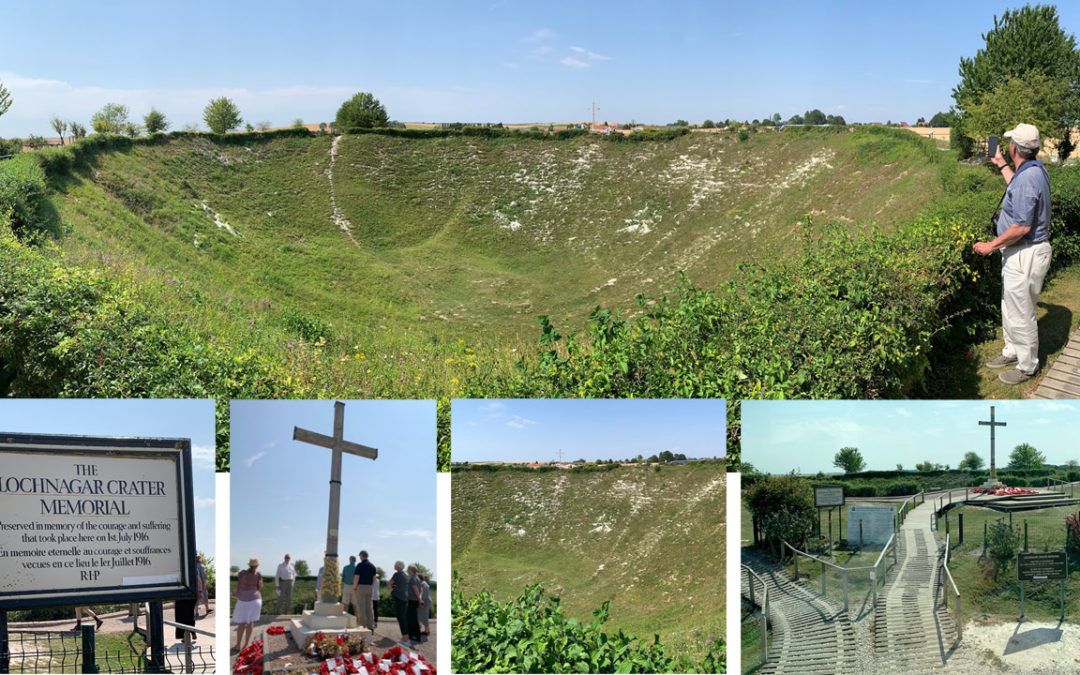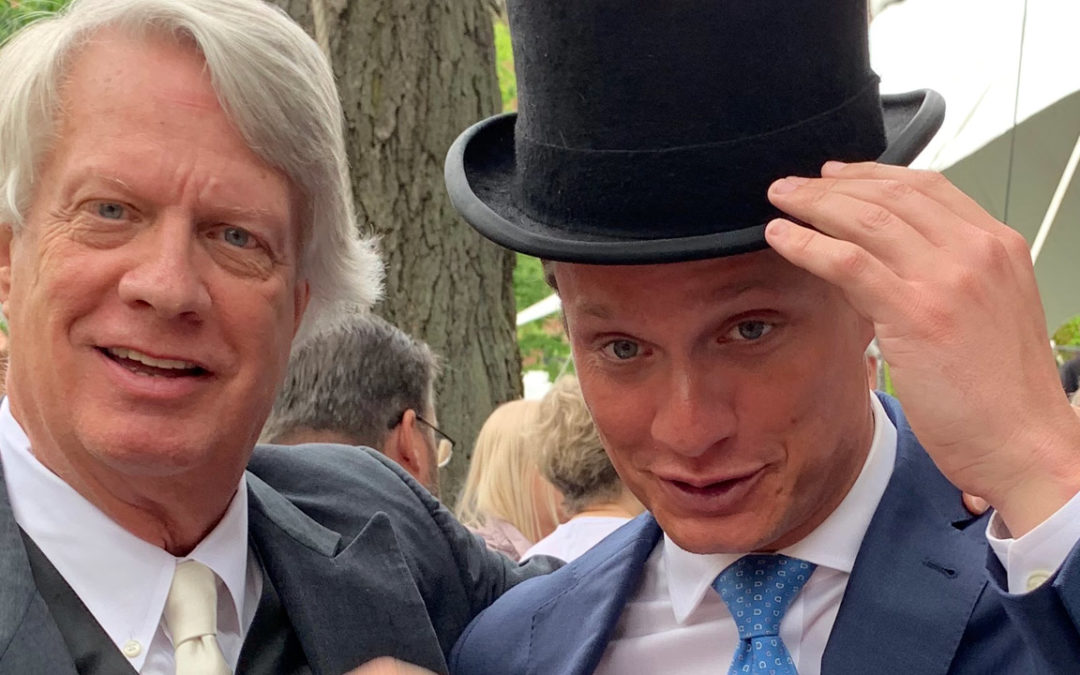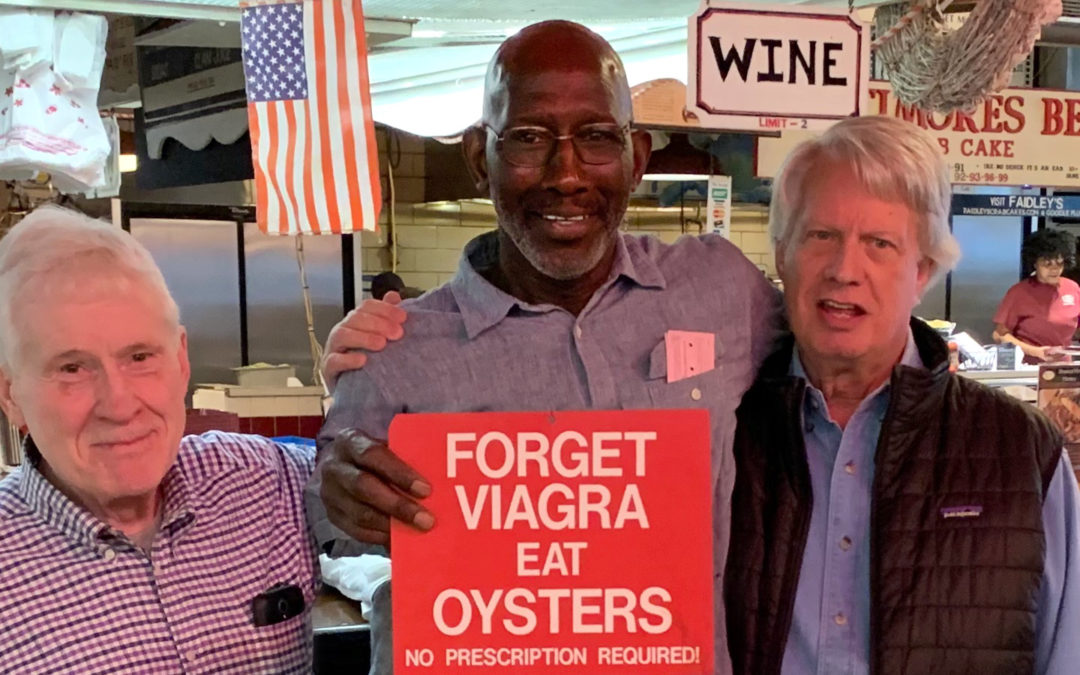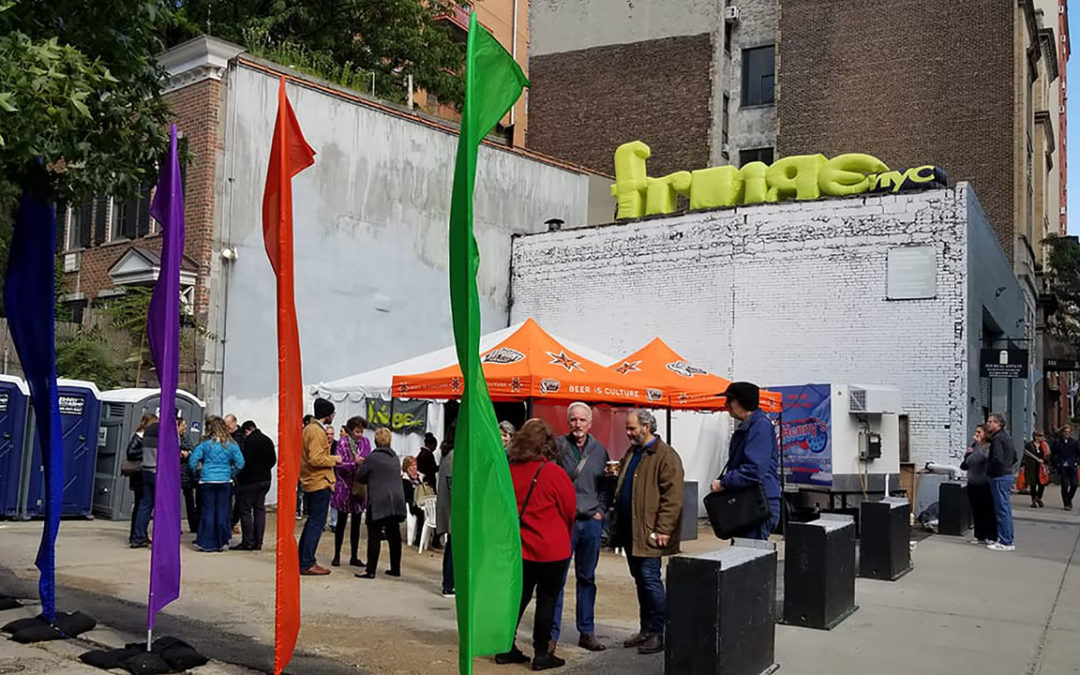
by Robert Bowie, Jr. | Aug 1, 2019 | Featured, Travel
It is almost impossible to describe the First World War in simple terms. It is unresolved as to how it evolved into the war it became — the number of casualties it caused easily exceeds eight million dead and double that in maimed and wounded — and its end probably was the beginning of the Second World War only twenty years later. Books and books and books continue to be written about it. It is a wellspring of scholarship and a mirror for the future and present.
There are two things it demonstrates to me, however. First, we seem to be incapable of maturing at the same speed as our ability to make weapons evermore capable of our mass destruction. Second, we seem to be able to commit ourselves blindly to use these weapons without realizing the extent of the destruction that we can cause. Both of these observations demonstrate the incredible capacity we have in the form of the “nation state” to destroy ourselves, despite our individual capacity to feel compassion, empathy, and kindness for each other on a daily basis as human beings who are not in a state of war.
Why have I attached a picture of a crater?
WWI introduced airplane warfare, submarine warfare, the machine gun, the tank, and gas warfare. The warfare was so intense that there are specific monuments dedicated to both missing soldiers and unidentifiable body parts.
So, is there something, a simple example from this war, that demonstrates redemption? Yes, I think there is.
Both sides built tunnels for days and months for incredible distances under entire towns and enemy lines to set explosives. Some of these tunnels were only four feet wide and three-and-a-half feet high. The excavation of the dirt was extremely difficult and endlessly time consuming. Imagine the commitment. Imagine the claustrophobia. Imagine the amount of explosives that then had to be carried underground to blow up a town or an enemy stronghold.
As I have said, the picture I have provided is of a crater. It is thirty to forty feet deep and almost a football field wide. The explosion sent debris four thousand feet in the air and killed and injured people who were never found. I took the photograph from the far side. There is a monument on the other side which, if you look closely, is a cross that is several stories high.
In the alternative, it has been documented that during a one-day armistice for Christmas the soldiers from both sides came out over their trenches, exchanged chocolate and cigarettes, and sang Christmas carols together.

by Robert Bowie, Jr. | Jun 25, 2019 | Featured, HAA, Personal
For me, the “future” is like a churning cement truck going to a job. The “present” is the dump of the watery mixture and its slow and permanent hardening. The “past” are the hardened roads I travel on again and again and again. Only the gift of “accident” can break apart all three and only with “creativity” do I become released and reborn to grow into a maturing perspective.
Over the last six years, I have been chosen to help The Alumni Association at Harvard put on graduation. I look forward to this and accept with pleasure each year when it is offered. I dress up in a silly top hat and tails to escort the honorary degree recipients and their families at Harvard’s graduation. It is an unusual and informative experience.
Rick, my son, and I are very close. After graduating from Dickinson College, his high school asked him to return to Baltimore to teach and help coach their football program. During these years Rick continued his commitment to education by getting a Master’s Degree from the night school at Johns Hopkins University, which allowed him only one night a week free. During these years Rick and I had dinner together every Monday night.
Rick has always been a very kind and socially conscious person. Rick also has an encyclopedic understanding of football and its rules and strategy. Because there is a deep divide in the opportunities provided in our city, after several years of teaching and coaching at his private high school, Rick elected to join his former head coach and teach at Saint Frances Academy in downtown Baltimore.
The year before Rick joined this school, it had only won one game. The next year, they were undefeated. The following year, they were ranked fourth in the nation.
All of the students on the football team went on to established and respected universities with mostly full scholarships. Rick told me several times that they were the most committed group of young men he had ever met. The school is located in the shadow of the penitentiary.
Rick continued his commitment to both education and football by accepting a graduate assistant position at the University of West Virginia, then followed his coach to the University of Houston. The last two years he has been working 24/7 as a GA for University of Houston’s football team and I never see him anymore.
So those are my hardened roads leading up to this year’s Harvard graduation. Here comes the cement truck: The week before my graduation duties this year, Rick called and said he had a free week. I wanted to see him desperately but I had made my commitment months ago. I asked him, “Do you want to come to Boston?” I couldn’t think of anything more boring for him but he said, “Sure.”
Was this a disaster about to happen or was this a gift of an accident? Rick would not know anybody…
We did everything together. A wonderful lunch with Rick and Lindsey Shepro and John Bowman at B&G oysters (Boston’s best oysters), and a dinner after graduation with Sam and Wendy Plimpton at No.9 Park (Boston’s best restaurant).

It is not easy to be shocked as you watch your child become, before your eyes, more sophisticated than you are. My old friends became his new friends almost instantly. And then we slipped back to our welcome past and beer and a Bruins game on TV and a Red Sox game at Fenway… and a stunning and subtle speech by Angela Merkel in the afternoon of graduation.
So often now, as I become older and easily set in my ways, I look for the gift of the “accident.” It breaks my safe world apart. From broken expectations comes the unexpected rebirth.

by Robert Bowie, Jr. | May 7, 2019 | Featured, Law, Personal
Several years ago Professor Mike Millemann, on the left, contacted me to see if I wanted to help him fulfill a grant made to the University of Maryland Cary School of Law to teach law differently by using the theater.
We signed up Elliot Rauh, of Single Carrot Theatre and decided the class should write plays about prisoners who had been released from prison after they had been determined to be absolutely innocent after years of incarceration. One of those plays was about Michael Austin, at the center, who was imprisoned in Maryland for over 27 years for a murder he did not commit. He was freed through the brilliant legal work of Larry Nathans, Esq., of Nathans & Biddle.
Last week we got together again at Lexington Market in downtown Baltimore as a reunion of old friends to help Michael because Michael had just found out that due to a typo in his arrest record he was never exonerated and that has kept him from getting work. This will be resolved but the reunion between friends nonetheless was wonderful.
In Michael’s case, and in most of the cases that we turned into plays, the process was remarkably similar. On the first day of class we brought Michael in to meet the class and answer questions. He was calm, collected, and despite the injustice of his incarceration not angry but very wise. In prison he had perfected himself and along the way he had become quite a remarkable musician.
Throughout the following weeks of the semester, the first third of the class was used to do deep research on what went wrong and what led to his conviction. The class went through trial transcripts, records of an incompetent defense lawyer, and files of prosecutors that withheld evidence and a transcript recording of the judge that sentenced an innocent man to life in prison.
The second third of the class the students wrote the backstory, and in the third and final part of the class, Elliot Rauh taught acting and turned inexperienced law students into the actors of their own play which was performed before the law school.
Michael stayed with the class from the beginning. One of the students said that he should provide music for the play and he agreed. Another one of the students suggested that at the end of the play, Michael should leave his instruments behind and identify himself as the Michael Austin about whom the play was written. The audience gasped and some wept.
At first I thought this class might have limited value so we asked that the students provide a one minute clip to the people who had provided us the grant to state whether they thought the grant money had been used appropriately. I became convinced when one student faced the camera and said “I wrote the part of a defense lawyer who was unprepared, acted the part of the prosecutor who withheld the time card that would have exonerated him, and read the exact words 30 years ago when an innocent man was pronounced guilty by a state court judge in the circuit court of Baltimore city and sentenced to life and I have never been in a courtroom.”
At that point we were convinced that the class worked. People were learning from mistakes made before they were fatal. We taught the class for seven years and it was ranked as one of the most appreciated classes at the law school during that time.

by Robert Bowie, Jr. | Oct 28, 2018 | FringeNYC, ONAJE, Personal
In the West Village of New York City, on October 13th at 7:00 in the evening, ONAJE opened as my first professionally produced play. I sat in the back, in a balcony with lights and sound equipment around me and watched the audience file in and take their seats. I gave the appearance of being calm but I was terrified.
I have been to opening nights for nine of my prior plays in the little theaters of Baltimore and I have learned there is an immediate courtship: the call offered by the actors at the beginning of the play and the audience’s response. You can feel it. It is confirmed with the first laugh but the commitment can also be felt in the early silence.
As the play unfolds, from the back of the theater, you can watch for physical movement, restless disengagement as evidence of the loss of commitment to a play. It can become contagious in the dead silence and then nothing can resurrect the play. Once you lose them, there is no getting them back.
My friends, the composer Christian De Gré and our producer Susan Conover Marinello, and I had been fortunate to have Tom Viertel as our dinner guest three weeks before we opened. Based on years of experience as a renowned Broadway producer, the founder of the Commercial Theater Institute, and director of the O’Neill, he told us a “no-intermission play cannot run more than 93 minutes” without the high risk it will lose its audience. There was no doubt in his voice. We took his advice. We knew he was right. I went to work cutting lines and shaping the script with four script reductions.
Opening night at FringeNYC was to be judged by a sold-out crowd as they rendered their verdict first in the dance of commitment as the play got underway and then after 90 minutes by the way they moved in their seats.
For me, knowing every line and the slightest modulations in an actor’s voice, the experience was, of course, different than an audience seeing it for the first time. The audience will be engaged until they’re not. The only measurement that is credible is how the theater feels and how the shadows in the seats sit engaged or start to move. That is the only language.
I could feel this audience’s early engagement and commitment to the play and surprisingly when I did, I started to daydream about the genesis of this project:
I am the oldest son. The oldest son of the oldest son of the oldest son, all of whom have been well-respected and distinguished lawyers, professors, and public servants. Although my father supported my love of storytelling, bringing me hand puppets from his travels and building me a little puppet theater so I could perform for my seventh- and eighth-grade classmates, there was no doubt my next step was to carry on the family profession of law.
While I dreamed of writing plays, I grew to love being a business trial lawyer. Before my father died several years ago, while I took care of him during his final years, he quite casually one afternoon looked at me and said, “I am very proud of what you have accomplished. I could never have started a law firm and succeeded in the way you have.”
Almost accidentally, he had released me to change my avocation to my profession. I soon retired and made a full commitment to become a professional playwright.
Opening night at FringeNYC was for me, unconsciously, like a flock of carrier pigeons released well over fifty years ago coming in to roost.
The last seven pages of the play runs 12 minutes to conclusion. I leaned over the rail and listened for the quality of the silence and looked down on an audience that did not move. They were engaged after 96 minutes, three minutes longer than Tom’s ultimatum. We had pushed the envelope but still survived.
The lights came down and there was a moment of silence, and as the actors came to their curtain call they were met by increasing and sustained applause. As the theater emptied out I saw many of my friends, some of whom had traveled from as far as California and Canada, as they walked to the stairs to exit past my door from the balcony.
I was not conscious at the time, even after I was welcomed by the audience and my friends, that like the characters I had written in ONAJE, after a long journey, I had finally come home.
by Robert Bowie, Jr. | May 14, 2017 | Featured, Travel
Recently I was fortunate to spend two weeks in southern Africa in the bush in a zoo without Borders. After a long flight from New York to South Africa and a relatively short flight to Victoria Falls in Zimbabwe, a small group of fellow travelers and I flew in several single engine planes and later three helicopters to a wonderful elegant resort campsite miles from everywhere deep in Botswana. Botswana is about the size of Texas , has a population of about 2 million people and has reserved approximately 37% of its land for the preservation of its natural habitat.
The first thing you notice as the dawn comes up on the first day is how wide the sky is. As you scan it you notice that the clouds offer several widely different configurations and weather patterns. Then you realize how big the land is beneath the sky and how far away you are from everybody else.
Slightly before dawn, during breakfast on the first day, we are told explicitly that the jeeps which we will be riding in have no sides and as long as we stay within the boundaries of the jeep we will not be attacked by any of the animals. The animals are apparently not threatened by the jeeps for the jeeps are apparently perceived by them as foul smelling mechanical elephants which neither attack the animals or are worthy of their attack. That is the basis for our safety.
However, we were informed, if we get out of the jeep it is an entirely different game. We are told that within the last two years in South Africa a photographer who leaned out of one of the jeeps for a better photograph was attacked by a lion and when the guide tried to save her he was also killed.
The first morning as we leave the campsite we travel into the bush and see huge herds of zebras and impalas that are living in fear of the lions which stalk them but we see no lions. The second morning just after Dawn we turn into a small clearing and are confronted by four lions walking slowly toward us from a distance of about 50 yards. The driver stops the jeep and instructs us to say nothing but feel free to photograph. The Lions slowly and methodically move toward us. We are facing them and they are walking toward us.
As the lions slowly approach my fellow riders in the jeep become either “believers” that the jeep is safe territory or “nonbelievers” and with every step of the Lions, start to show an increasing countdown of the last seconds of their lives. They can’t move and the fear becomes palpable. The eyes are wide and the breathing becomes slightly labored.
On the other hand, the believers or happily photographing and silently adjusting their telescopic lenses. The Lions grow closer and closer and within 10 feet they veer to the right and one veers to the left so that it will be behind us. Everyone in the jeep recognizes that they must keep their eyes on the three lions that will pass to our left within several feet of the jeep but we will not be able to turn and watch the one lion that is moving behind us on our right. The believers continue to happily photograph adjusting their telescopic lens to catch the reflection of the jeep in a Lion’s eyes. The nonbelievers are breathing softly, their eyes closed, waiting for death.
After a few moments they were passed us and we started the engine and continued our day.





